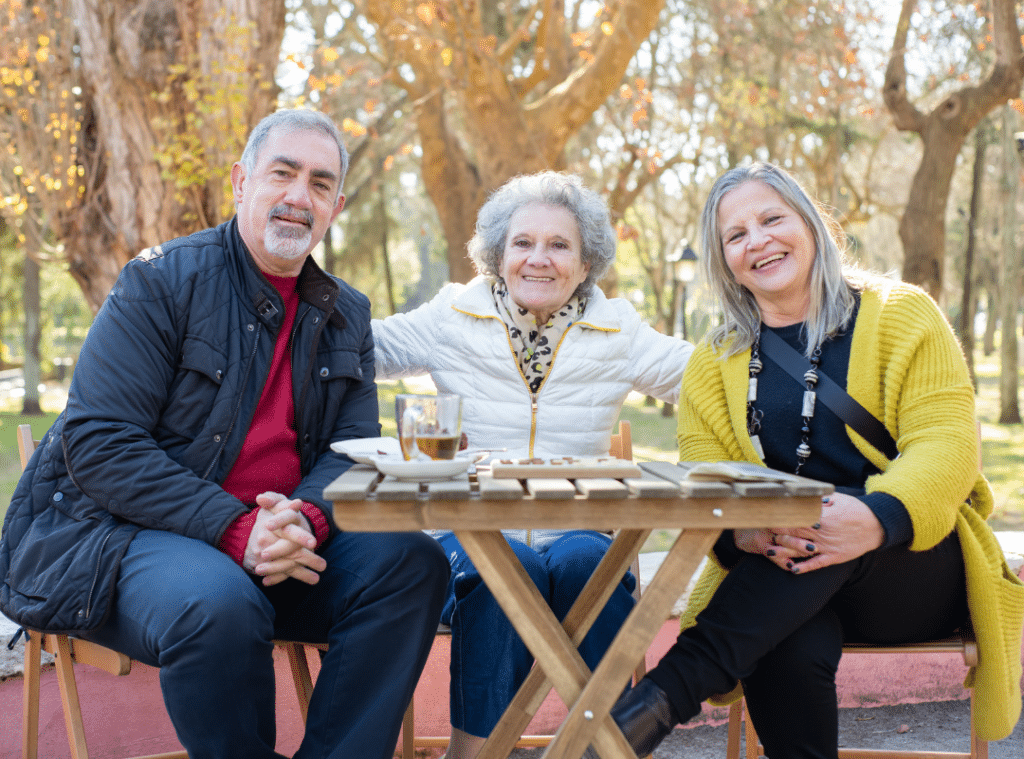Exploring a new chapter in life brings exciting possibilities, especially when it includes a vibrant, supportive environment designed for those aged 55 and better. At Westmont Village Homes, active adult living isn’t just a lifestyle—it’s a gateway to wellness, connection, and fulfillment. Surrounded by like-minded neighbors, you’ll enjoy activities that support physical and mental health while cultivating long-lasting friendships.
Whether you’re researching active adult living near you or seeking a new place to call home, Westmont Village Homes offers a warm community where independence and engagement are top priorities. From thoughtfully designed amenities to inclusive events and services, this lifestyle provides the perfect balance of freedom, support, and opportunity.
Learn more at Westmont Village Homes.
Understanding Active Adult Living
Active adult living is crafted to support individuals 55 and older who want to enjoy retirement on their own terms. Rather than focusing on medical care or high-level assistance, these communities promote autonomy while offering opportunities for socialization, fitness, and enrichment.
Whether you’re attending a group exercise class or volunteering with your neighbors, this lifestyle fosters a sense of purpose. Unlike traditional retirement models, active adult living apartments offer private residences paired with shared community spaces, allowing for both privacy and connection. These communities often offer services such as housekeeping, maintenance, and wellness programs that support a carefree lifestyle.
Read more about supportive care services offered in such communities.
Key Features of Active Adult Communities
Living in an active adult living for rent community often includes access to:
- Fitness centers and group classes
- Outdoor walking trails and landscaped gardens
- Organized clubs and social events
- Maintenance-free housing options
- Nearby access to shopping, dining, and recreation
The design of these communities encourages interaction, wellness, and exploration. Whether it’s yoga on the lawn or happy hour mixers, these spaces are meant to bring people together and support healthy aging. At Westmont, you’ll also benefit from social wellness programs that uplift both body and mind.
The Benefits of Active Adult Living
What makes active adult living near you such a valuable lifestyle choice? For starters, it’s about more than just where you live—it’s how you live. Some major benefits include:
- An emphasis on wellness activities that keep you physically and mentally strong
- Reduced stress from home maintenance and daily chores
- Increased opportunities for forming new friendships and community ties
- Programs and amenities that align with your interests and values
The uplifting energy of active adult living apartments helps reduce loneliness, promote personal growth, and encourage lifelong learning.
Learn more about senior wellness benefits.
Comparing Active Adult and Independent Living
While both styles encourage independence, active adult living emphasizes structured engagement. Independent living may offer more privacy and flexibility, but generally has fewer community-centered programs.
Age Restrictions
Active adult living for rent typically has an age minimum, most often 55 or 62. This creates a peer-oriented environment, making it easier to connect over shared life stages. Independent living may be open to younger residents, offering more flexibility but less commonality.
Social Dynamics
One of the main differences lies in community involvement. Residents of active adult living near you participate in daily group activities, wellness events, and clubs that reinforce a sense of purpose. Independent living offers more unstructured time and tends to attract those who prefer autonomy over engagement.
Explore how social activities enhance senior living.
Services and Amenities
From maintenance-free homes to concierge services, both living options offer convenience, but the lifestyle focus differs. Active adult living apartments prioritize wellness programs, fitness facilities, and community engagement. Independent living tends to provide dining options, housekeeping, and less structured services.
Social Life and Enrichment Opportunities
One of the top perks of active adult living is the enriching social environment. These communities often host:
- Book clubs, gardening groups, and travel clubs
- Community festivals, barbecues, and holiday events
- Fitness classes like Tai Chi or Zumba
- Volunteer drives and fundraising activities
Clubs and Groups
Active adult living apartments create built-in opportunities to explore interests and make new friends. You’re not just joining a community—you’re joining a lifestyle that thrives on connection. Group activities allow you to form bonds that support your well-being and enrich your daily routine.
Community Events
Want to know what to expect at a thriving active adult living near you? Here are just a few events that bring neighbors together:
- Weekly happy hours
- Art workshops and creative classes
- Guided wellness walks
- Charity drives for local causes
These experiences promote fulfillment and engagement, two cornerstones of healthy aging.

Pros and Cons of Active Adult Living
Like any lifestyle choice, there are pros and cons to consider for active adult living before making a decision.
Pros
- Built-in social community
- Low-maintenance housing
- Access to wellness amenities
- Age-appropriate lifestyle
- Emotional support and friendship
Cons
- May not include medical care
- Often limited to people aged 55+
- Some costs can be higher than traditional apartments
- Lifestyle may feel too structured for highly independent individuals
Understanding the active adult living pros and cons helps ensure you choose a setting that fits your personality and goals.
How to Choose the Right Active Adult Community
When comparing options, ask yourself:
- Do I value social connection or prefer solitude?
- Do I need access to wellness and fitness amenities?
- Am I seeking active adult living for rent that fits my budget?
- Would I prefer a larger or smaller community?
Also, take time to tour communities in your area. Look for strong resident involvement, accessible design, and a warm, inclusive atmosphere.
You can also explore external guides like:
- AARP’s guide to active adult communities
- RetireGuide’s comparison of senior housing options
Your Next Chapter Begins at Westmont
In choosing active adult living, you’re investing in a lifestyle that celebrates wellness, independence, and connection. Westmont Village Homes provides everything you need to thrive in this next chapter—social programs, beautiful surroundings, fitness opportunities, and a strong community bond.
Whether you’re searching for active adult living for rent, evaluating the active adult living pros and cons, or simply dreaming of a more engaging retirement lifestyle, the answer may be closer than you think. Let Westmont be the place where your retirement dreams take root.
Call us at 951-697-2060 or visit Westmont Village Homes to schedule a tour or learn more.
Dive into the vibrant life our Westmont communities have to offer.Find Where You Belong
Frequently Asked Questions
What does active adult living mean?
Active adult living refers to residential communities designed for adults aged 55 and older, who are typically retired or nearing retirement, yet still live independently. These communities promote a lifestyle centered around wellness, social activities, and low-maintenance living. Amenities often include fitness centers, pools, walking trails, and organized group events. The goal is to offer a vibrant, engaging environment for older adults without the responsibilities of traditional homeownership.
What are the disadvantages of living in a 55+ community?
While 55+ communities offer many benefits, there are some potential drawbacks to consider. These may include age restrictions that limit younger family members from living with you full-time, as well as higher HOA fees. Some residents may find the environment too quiet or lacking in diversity. Additionally, resale value may be impacted due to the limited buyer demographic.
Can I live in an active adult community?
You can live in an active adult community if you meet the minimum age requirement, typically 55 or older. Some communities allow younger spouses or partners under certain conditions. You must also be capable of independent living, as these communities generally do not offer personal care services. It’s ideal for those seeking a socially engaging and low-maintenance lifestyle.
What is an active adult model home?
An active adult model home is a fully furnished sample residence used to showcase the design, layout, and amenities of homes within a 55+ community. These homes allow prospective buyers to visualize what living in the community would be like. Often, model homes highlight popular features such as open floor plans, accessibility, and modern finishes. Visiting a model home can help potential residents decide if the community meets their lifestyle needs.








